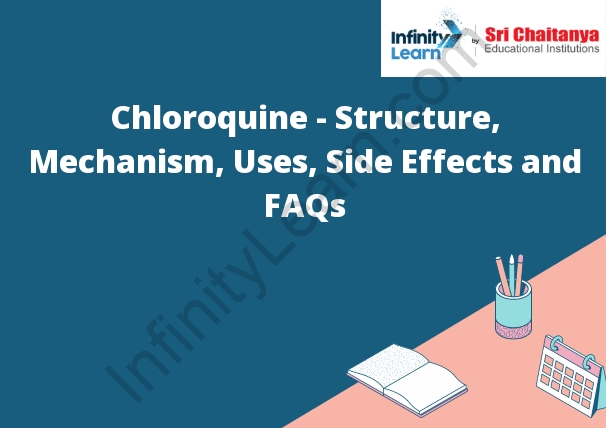Table of Contents
What is Chloroquine?
Chloroquine – Structure: Chloroquine is an anti-malarial drug that is also effective in treating autoimmune diseases such as rheumatoid arthritis and lupus erythematosus. It is a weak base that is able to cross the cell membrane and inhibit the biosynthesis of heme, a component of hemoglobin. Heme is necessary for the survival of the malaria parasite, and by inhibiting its production, chloroquine kills the parasite.

Chloroquine Chemical Structure
Chloroquine is a 4-aminoquinoline antimalarial drug that is structurally similar to quinine. It is a weak base and its pKa is 8.6. Chloroquine exists as a zwitterion in aqueous solutions. The drug is highly lipid soluble and readily crosses cell membranes. Chloroquine is a weak base and its pKa is 8.6. Chloroquine exists as a zwitterion in aqueous solutions. The drug is highly lipid soluble and readily crosses cell membranes.
Mechanism of Chloroquine
Chloroquine is a weak base with a pKa of 9.5. It is a lipophilic molecule that can cross the cell membrane by passive diffusion. Once inside the cell, it is protonated (H+ added) to form chloroquine phosphate. This molecule is a potent inhibitor of heme polymerization, which is required for the synthesis of heme, a component of hemoglobin. Chloroquine thus inhibits the growth of the parasite by preventing it from producing hemoglobin.
Chloroquine Uses
- Chloroquine is a medication that is used to prevent and to treat malaria.
- Malaria is a disease that is caused by a parasite that is found in tropical and subtropical regions of the world.
- Chloroquine is also used to treat amebiasis, a disease that is caused by a parasite that is found in the intestines.
Chloroquine Side Effects
- Chloroquine is a medication used to prevent and treat malaria.
- It is also used to treat amebiasis.
- Common side effects include vomiting, headache, and diarrhea. Serious side effects include seizures, blindness, and hearing loss.
How to Use Chloroquine Phosphate?
- Chloroquine Phosphate is a medication that is used to prevent and to treat malaria.
- It is also used to treat amebiasis.
- Chloroquine Phosphate is available as a generic medication.
- Chloroquine Phosphate is taken by mouth.
- Chloroquine Phosphate is usually taken once a week.
- Take Chloroquine Phosphate with food or milk to prevent stomach upset.
- If you are taking Chloroquine Phosphate to prevent malaria, you will need to start taking it 1 to 2 weeks before traveling to an area where malaria is common.
- Continue taking Chloroquine Phosphate for 4 weeks after leaving the area.
- If you are taking Chloroquine Phosphate to treat malaria, you will need to start taking it as soon as you notice symptoms of malaria.
- Continue taking Chloroquine Phosphate for 4 weeks after you leave the area.









